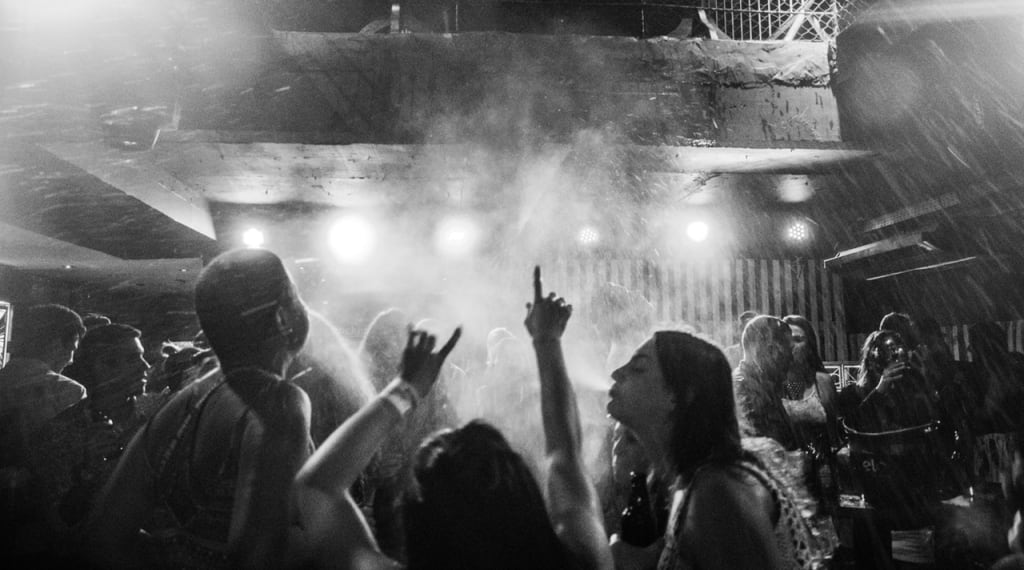10 Dance Music Genres from Europe That America Doesn't Get
Meet 'EDM's Cooler Relatives

While it was the clubs of Chicago and Detroit that first brought house and techno music into the world back in the 1980s, most music aficionados of the electronic persuasion would agree that it has been the other side of the Atlantic where dance music has truly come into its own.
For whatever reason, though, many of the characteristic sounds of Europe’s urban spaces have never quite been able to capture hearts, minds and dancefloors in the same way when brought to the USA, despite dance music now being a multi-billion-dollar industry worldwide.
Often on the more experimental end of the spectrum, the history of these styles is interwoven with the rich and storied underground nightclub culture of the continent, and thus often tells as much of a story about clubbers as they do the music itself.Maybe file club culture alongside wine, healthcare and accents as one of those things that the Europeans just do that little bit better.
A product of Sheffield, a post-industrial English city with a rich history in musical innovation, this genre is characterized by its emphasis on the heavy, wobbling bass from which it takes its name.
When first popularized in the early-to-mid-2000s the style was known as ‘Niche’, after the nightclub where the music was first played, and it is here that bassline courted much of the notoriety that colored its early years.
After clashes between rival gangs from across the country became a regular occurrence on its premises, the club was forced to close by the local police force in 2005 after a spate of gun crime, an especially rare occurrence in the UK.
The police force in the city even went as far as to state that “the only gun crime we’ve had related to nightlife in Sheffield has been with bassline.”
Such negative press failed to halt an unassailable rise, however, with the chart breakthrough of T2’s "Heartbroken" at #2 in 2007 marking bassline's arrival into the mainstream, and in the process helping to shake off some of its more undesirable connotations - it even had the novel honor of being dubbed 'the sound of Britain's myspace generation'.
Though experiencing something of a quiet spell in the years to follow, an updated, more hard-hitting incarnation of the sound in the past two years has been spearheaded by the DJs Skepsis, DJ Q and Darkzy, giving the genre a youthful appeal once again.
This hyperactive, bassline-infused variant of drum 'n bass has been the target of much derision for DnB’s purists, leading some of them to adorn it with the mocking label of ‘clownstep’.
Nonetheless, jump-up drum and bass can be regarded a huge musical success story of Europe's dance music scene, with the likes of DJ Hazard, Andy C, and Spaow now taking centre stage at a whole roost of festivals across the continent.
Prominent electronic music publication Mixmag even was far as to declare in the summer of 2017 that the genre was approaching a ‘golden era’, pointing to jump-up's popularity amongst female audiences, the inclusiveness of its events and its lively, hooky timbre as some of the reasons for its growing success.
Originating in the United Kingdom’s Afro-Caribbean community in the early 1990s, Jungle’s origins mirror the early days of of hip-hop on the East Coast, with many in the black community at the time acutely suffering the widespread disillusionment and discontent typical of widespread unemployment.
Jungle’s early days were fostered by London’s lively reggae scene, but its rapid proliferation through unlicensed ‘rave’ parties and dedicated pirate radio stations saw it quickly become a unique and valuable outlet for the community’s self-expression. The genre even inspired a small subculture of sorts in the form of the ‘junglist’ movement.
A New York Times article in 1996 lead a report that American record labels had begun to produce jungle compilations in anticipation of the genre’s popularity with the African American community, although this never appeared to fully materialise.
Characteristics of jungle music include the setting of sub-bass sound to a drum beat of around 140 to 180 beats per minute, combined with strong synthesizer or string instrument elements to provide melody. It can be differentiated from drum and bass, its more commercially successful iteration, through its more off-kilter, syncopated style.
Named for an archipelago of islands off the coast of Spain, this subgenre of trance music channels the relaxed side of Ibiza, a popular clubbing destination in Europe.
It draws much of its inspiration from Balearic beat, a style that helped push the development of dance music in Europe through its exposure to tourists, who would imitate and experiment with its sound upon return to their home country. Balearic trance’s subdued, uplifting and euphoric melodies can be contrasted to the intense, high-tempo feel of psy-trance and hard trance.
The ‘father’ genre to bassline, UK funky and many others, UK garage experienced huge popularity in Britain in the 1990s and early 2000s, and has remained influential in the British dance music scene ever since.
UK garage can trace its own ancestry back to early vinyl imports of US Garage, which were reworked and fused with jungle in the mid-1990s to create a distinctive hooky, kick-drum led sound. Early innovators included such artists as MJ Cole, Tuff Jam and Dreem Teem.
The genre’s development by turn of the millennium had seen it evolve into a sound more centered around the lyrical contributions of MC’s, and it was this more vocally-focused version of garage that entered the mainstream, with the gloriously named DJ Pied Piper and the Masters of Ceremonies reaching number #1 on the UK charts in 2001 with 'Do You Really Like It'.
Though there are no prizes for guessing where this style started out, the musical influences behind UK funky come from decidedly more exotic than the United Kingdom, incorporating African and West Indian percussive rhythms and soulful R&B vocals to complement a bass-driven and house-derivative sound.
Like the music itself, the scene surrounding UK funky’s late 2000s heyday had the habit of being thrown-together, quirky and at times chaotic, with many electronic music producers of other genres adapting and promptly ditching the style in a relatively short space of time. In fact, by 2011, new releases in the style had almost entirely evaporated.
As is the cyclical nature of popular music, however, it only took a few years before the sound was rediscovered by the mainstream, with Canadian hip-hop star Drake sampling Crazy Cousinz’s UK Funky remix of ‘Do You Mind’ by Kyla in his 2016 megahit ‘One Dance.’
Techno and house - long the dominant forces in electronic dance music—created an offspring in the 1990s, and it was blessed with the highly imaginative name of tech house.
Coming into its own as a distinct genre midway through the decade, being originally little more than a label used by record stores to describe genre-ambiguous dance music, tech house’s development was helped considerably by establishing its own spaces across the continent, such as London's The End, a former sanctuary of lesser-known hardcore music that closed its doors in 2009.
Having seen its greatest popularity to date in recent years thanks to an internet-led revival, tech house’s success has not been without its critics, and some have decried the genre in its current form for a perceived commercialization, over-exposure and lack of variety.
Breakbeat hardcore is inextricably linked to the original British rave scene of the late 1980s and early 1990s.
A hedonistic youth movement focused around unlicensed parties in abandoned industrial sites, drug-taking (primarily MDMA) and psychedelic imagery, rave culture became such a phenomenon in its heyday that the British government even drew up laws designed to disrupt its growth, banning unlicensed gatherings that were "predominantly characterised by repetitive beats.”
Stylistically, breakbeat hardcore makes use of the ‘break beats’ popularised by funk and soul music, in which a track is momentarily stripped of its instrumental elements and its percussion isolated. This created an idiosyncratic sound that eventually morphed into jungle, a genre which eventually eclipsed it in terms of popularity.
One of Britain’s more kitsch contributions to popular music, happy hardcore gathered a cult following in the mid-1990s after the fragmentation of the existing hardcore scene.
While the south of England turned towards the darker timbre of jungle, northern parts of the country began to experiment with a more upbeat, ‘happy’ sound that retained many qualities of earlier hardcore music, becoming its own musical style typified by a frantic 180 beats per minute rhythm and a frequent use of piano riffs.
Much maligned but hugely popular into the early 2000s, popular happy hardcore DJs have included such names as Force and Styles, DJ Sy and Slipmatt.
Few genres that house themselves within the broad church of dance music provoke quite as fevered a reaction as gabber. An eccentric, punky spin on hardcore techno, gabber’s meteoric late 1990s rise began in Rotterdam in the South Holland region of the Netherlands, with a cult following holding out across Europe to this day.
Like many a musical movement, the gabber scene emerged with its own distinct fashions, with an emphasis on garish, eye-catching sportswear coupled with shaved heads amongst the men, whilst a shaven back and sides ponytail look was favored by female ravers.
Along with gabber’s popularity came the inevitable trappings of controversy, centering largely around its connotations with heavy use of illicit substances, such as amphetamines and MDMA.
Attempts by a small fringe neo-Nazi element to involve itself in the scene faced a heavy and successful resistance, serving to contribute only further to the outré, resilient spirit that has seemed to define gabber’s identity.
About the Creator
Benedict Tetzlaff - Deas
http://benedicttetzlaffdeas.wordpress.com






Comments
There are no comments for this story
Be the first to respond and start the conversation.